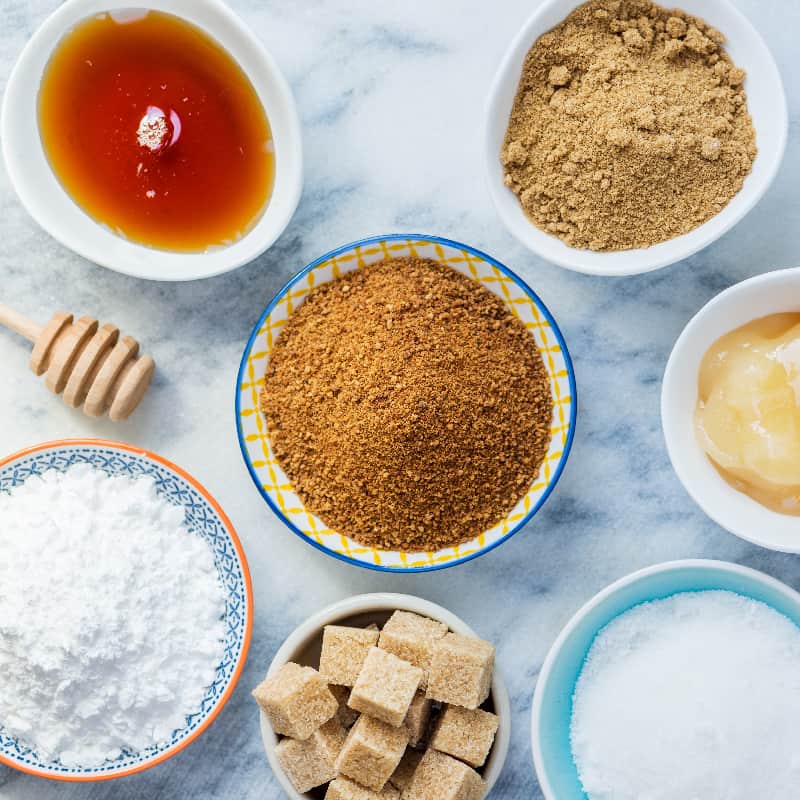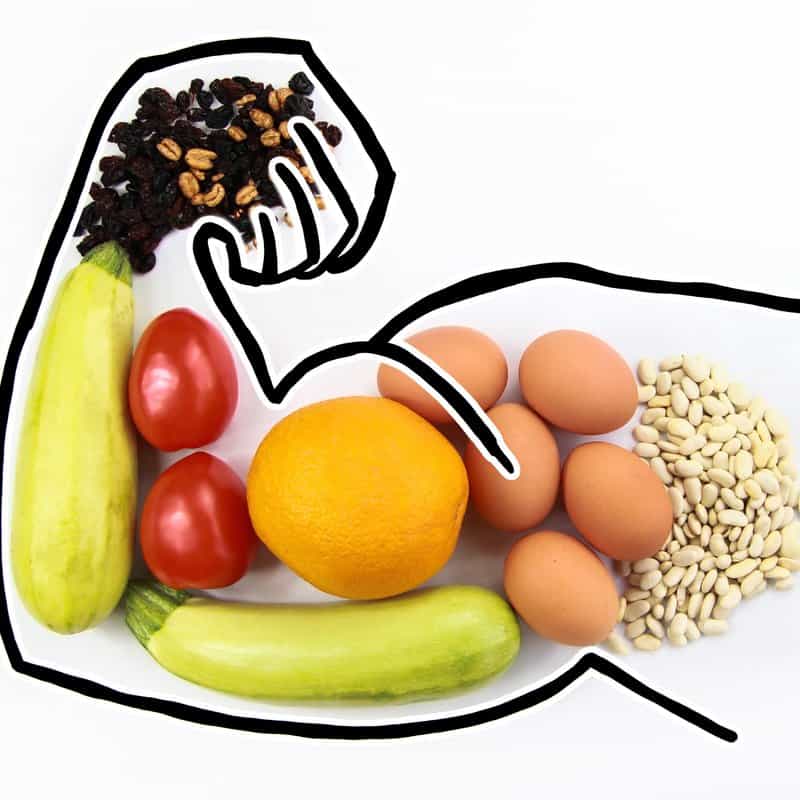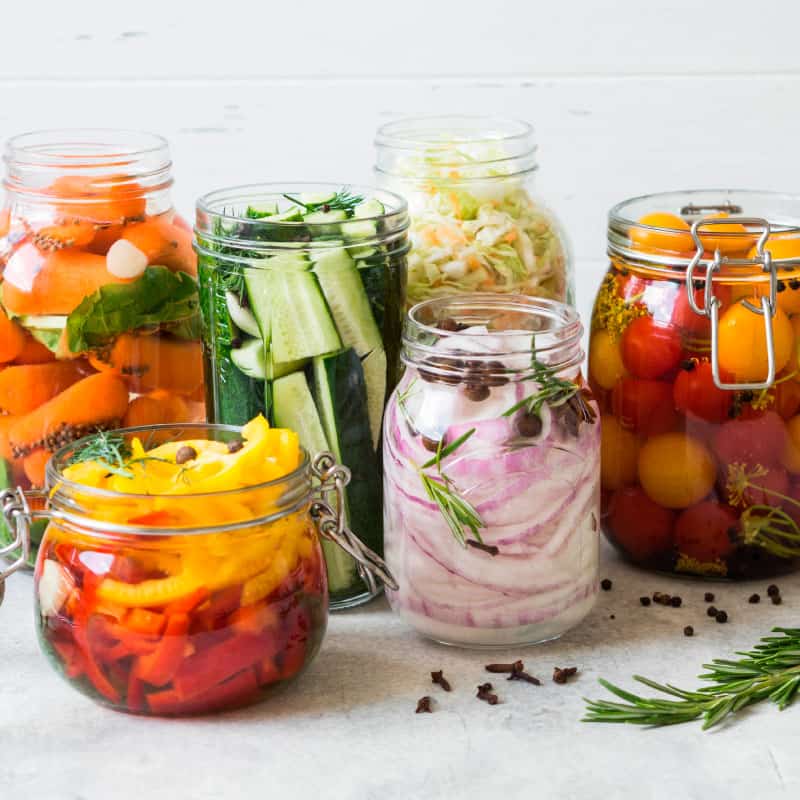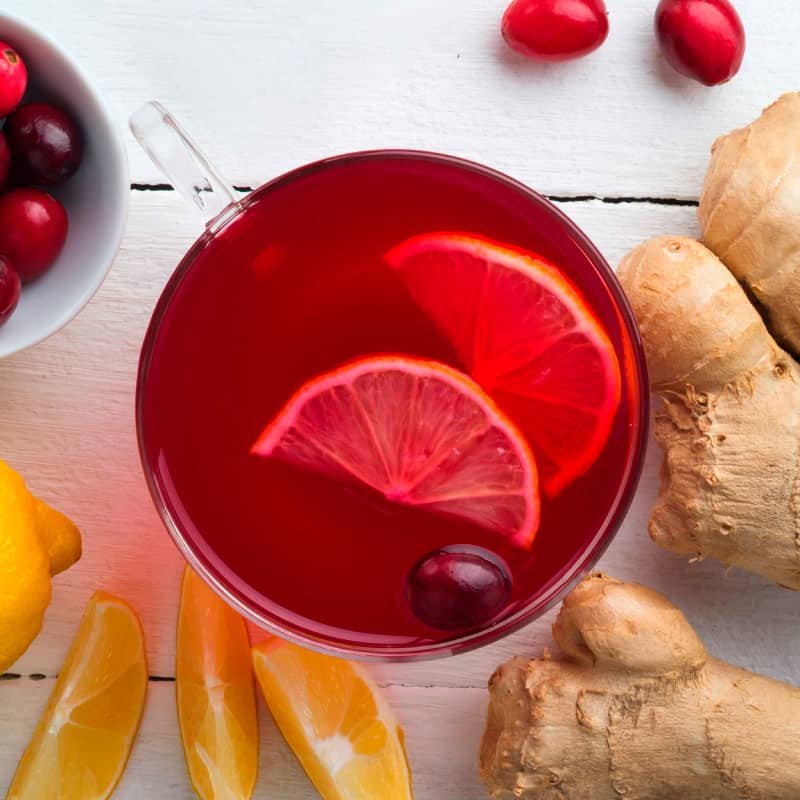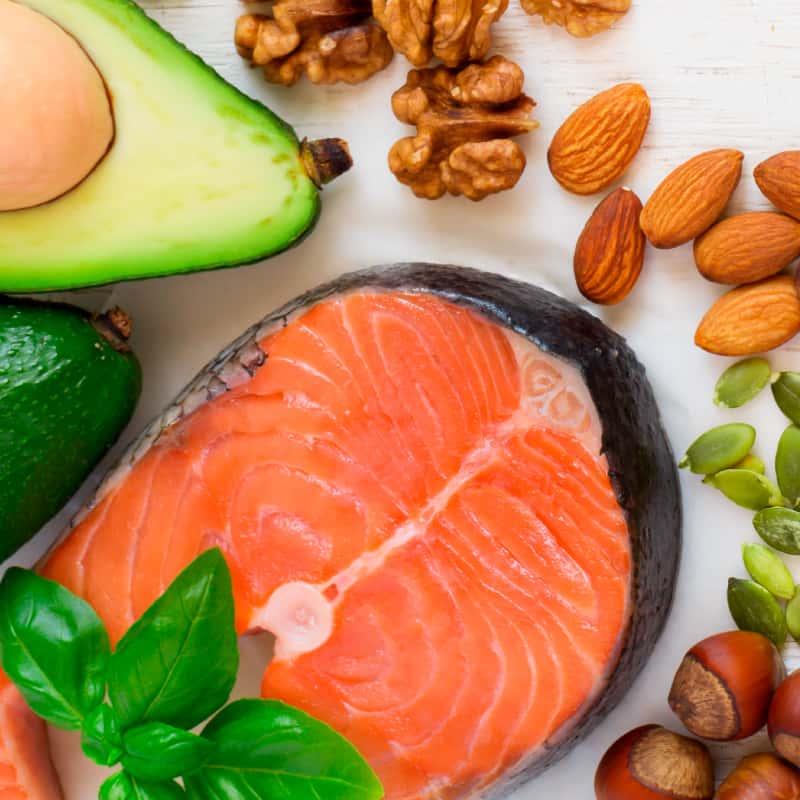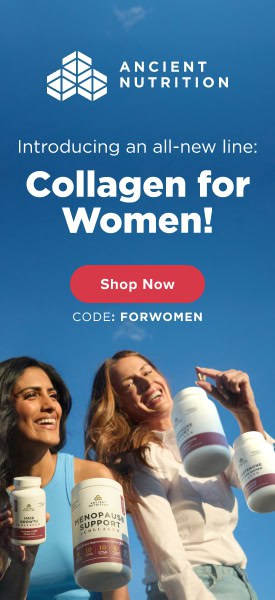This Dr. Axe content is medically reviewed or fact checked to ensure factually accurate information.
With strict editorial sourcing guidelines, we only link to academic research institutions, reputable media sites and, when research is available, medically peer-reviewed studies. Note that the numbers in parentheses (1, 2, etc.) are clickable links to these studies.
The information in our articles is NOT intended to replace a one-on-one relationship with a qualified health care professional and is not intended as medical advice.
This article is based on scientific evidence, written by experts and fact checked by our trained editorial staff. Note that the numbers in parentheses (1, 2, etc.) are clickable links to medically peer-reviewed studies.
Our team includes licensed nutritionists and dietitians, certified health education specialists, as well as certified strength and conditioning specialists, personal trainers and corrective exercise specialists. Our team aims to be not only thorough with its research, but also objective and unbiased.
The information in our articles is NOT intended to replace a one-on-one relationship with a qualified health care professional and is not intended as medical advice.
Is Corn Healthy? Surprising Facts About Its Nutrition, Benefits & Side Effects
September 15, 2025
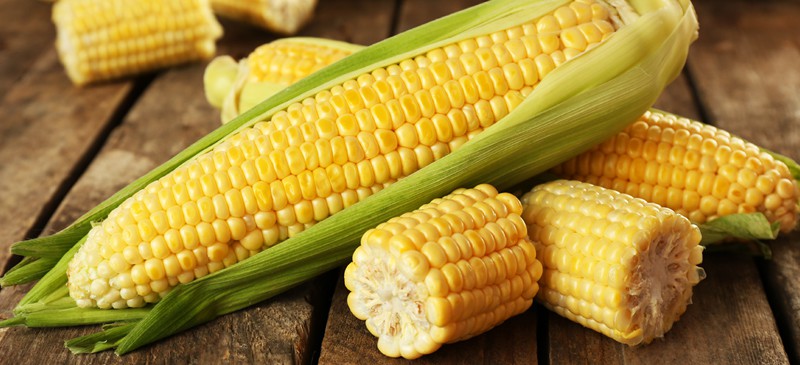
People eating the average American diet today unknowingly consume more corn every day in one way or another than they’d probably ever believe. Confused about the nutritional value of corn and whether or not corn nutrition is bad for you?
Well, you’re not alone.
So is corn good for your health?
When combined with other plant foods like beans, vegetables and avocados, the nutritional value of corn has helped support growing populations, especially those living in impoverished areas, for many decades. As a “staple crop,” corn nutrition provides a high amount of important vitamins, minerals, fiber, carbohydrates and important calories to millions of people every year.
In fact, unprocessed, organic, non-GMO corn has been eaten for thousands of years and has some important health benefits. Unfortunately, the kind widely consumed today is another story.
The types of corn so commonly included in both children’s and adults’ diets today are the overly modified kinds, found in less-than-ideal foods like fried corn tortilla chips, buttery popcorn, high fructose corn syrup, corn oil, corn flour and other packaged food products.
What is corn?
Corn (scientific name Zea mays), called maize in Spanish, has been a staple ingredient in South, Central and North America for thousands of years. First domesticated more than 8,000 years ago, it has been a traditional food for Native Americans and is now included in the diets of people living around the world, including many populations in India, Mexico, Italy and nearly every nation in Central America.
Real, traditional corn is grown throughout the warm summer months on stalks of “ears” that come in far more colors than the standard bright yellow. It can be found in different varieties, including red, pink, black, purple, multicolored and blue.
Although it’s most popular as the staple ingredient used to make tortillas, tacos or burritos, it is also used around the world to make polenta, flour, fritters, soups, sauces and more.
Is corn a vegetable?
Most experts consider it to be a vegetable, although it’s treated more like a whole grain. When eaten in an unprocessed way and properly prepared, non-GMO whole corn kernels actually have some impressive nutrients to offer.
For example, organic corn is a vitamin C food, magnesium-rich food, and contains certain B vitamins and potassium. Corn nutrition also supplies a good dose of two antioxidants linked to eye and skin health: zeaxanthin and lutein.
Eating fresh corn on the cob also gives you a good amount of the daily dietary fiber you need, along with some complex carbohydrates that are a good energy source.
Unfortunately, GMO foods are produced by companies in order to be able to grow in depleted soils that hold fewer nutrients. Therefore, you definitely want to go organic and check for GMO labeling when buying corn or any products that contain it.
Aside from having other problems, the GMO version doesn’t contain the same level of beneficial vitamins, minerals and antioxidants that the organic variety has.
In the U.S. and most other Western, developed nations, eating fresh, organic corn on the cob is not the problem that most people face. Rather, overconsuming highly processed foods that have multiple chemically engineered ingredients derived from this crop is.
The problem is that nearly all of the corn available in standard American supermarkets today is genetically modified. Plus, it’s usually also unrecognizable considering how much processing it’s gone through.
Corn nutrition facts
One large ear of boiled sweet yellow corn nutrition (about 118 grams) contains approximately:
- Calories: 113
- Total Carbohydrates: 24.8 g
- Fiber: 2.8 g
- Sugar: 5.4 g
- Total Fat: 1.8 g
- Saturated Fat: 0.2 g
- Polyunsaturated Fat: 0.7 g
- Monounsaturated Fat: 0.4 g
- Protein: 4 g
- Sodium: 1.2 mg (<% DV*)
- Pantothenic Acid: 0.9 mg (18% DV)
- Niacin: 2 mg (13% DV)
- Vitamin B6: 0.2 mg (12% DV)
- Manganese: 0.2 mg (9% DV)
- Thiamine: 0.1 mg (8% DV)
- Folate: 27.1 mcg (7% DV)
- Vitamin C: 6.5 mg (7% DV)
- Magnesium: 30.7 mg (7% DV)
- Phosphorus: 90.9 mg (7% DV)
- Copper: 0.06 mg (7% DV)
- Zinc: 0.7 mg (6% DV)
- Riboflavin: 0.07 mg (5% DV)
- Potassium: 257 mg (5% DV)
- Iron: 0.5 mg (3% DV)
*Daily Value: Percentages are based on a diet of 2,000 calories a day.
In addition, one large ear also contains some vitamin A, vitamin E, vitamin K, choline, calcium, selenium, omega-3 and omega-6.
Is corn healthy? (Benefits)
1. Good source of antioxidants
Corn is surprisingly a high-antioxidant food. The different color varieties of the kernels signify various types of phytonutrient combinations and nutritional values of corn.
The most popular type, yellow corn nutrition is particularly a good source of carotenoid antioxidants, especially lutein and zeaxanthin (also found in squash, carrots and other deeply colored fruits or vegetables). Other types supply antioxidants, such as anthocyanins, protocatechuic acid, hydroxybenzoic acid, beta-carotene, caffeic acid and ferulic acid.
Carotenoid antioxidants, the kind most abundant in the corn kernel, are known to support the immune system and defend the eyes and skin against oxidative stress. Although many antioxidants are heat-sensitive and can become reduced during cooking, some research shows that drying corn slowly at low temperatures, much like traditional populations did to preserve the kernels during colder months, preserves a high percentage of the nutritional value, especially the beneficial antioxidants.
2. High in fiber
Does corn make you poop? Like all vegetables and whole plant foods, it is a food that provides a nice dose of filling fiber, which can certainly help with bowel function.
More specifically, it has a high ratio of insoluble-to-soluble fiber. This means it has various beneficial effects on the digestive system.
Insoluble fiber is the type that moves throughout the digestive system unabsorbed and metabolized. That is how it helps us go to the bathroom.
Certain types of fiber, especially soluble fiber, reach the lower part of the large intestines, where they are metabolized by intestinal bacteria and turned into short chain fatty acids (SCFAs). This is beneficial for supporting the “good bacteria” in your gut and creating a healthy microbiome.
SCFAs from high-fiber foods also supply energy to the cells that line the large intestines and keep the digestive tract in good shape. They help produce regular bowel movements and flush the body of waste and toxins.
That’s why SCFAs are linked to better intestinal cellular function and, therefore, might be beneficial for preventing cancer of the digestive organs, including colon cancer.
3. Slowly digested source of carbohydrates
Corn nutrition is high in starch, which is a type of complex carbohydrate that supports steady energy levels. Unlike refined carbohydrates, which zap us of energy and aren’t filling for long, foods high in starch and fiber are beneficial for controlling blood sugar levels because the fiber slows down the rate at which glucose (sugar) is released into the bloodstream.
Aside from supplying fiber, it also has a decent amount of protein for a vegetable. Fiber and protein together help fill us up better than carbohydrates alone because they stabilize the passage of food through the digestive tract and help prevent drastic blood sugar fluctuations.
In addition, corn nutrition contains peptides that have been found to exhibit antihypertensive, hepatoprotective, anti-obesity, antimicrobial, antioxidative and mineral-binding effects, according to a 2019 study.
Does corn make you gain weight?
Based on what we see from populations who eat a lot of unprocessed corn, it shouldn’t. Relatively speaking, it is low in calories while still providing nutrients.
A large ear only has about 113 calories, making it a reasonable addition to a healthy meal. In fact, this is less than most grains and is roughly equivalent to eating a nutritious banana, except the corn actually has much less sugar and more protein and fiber.
There’s usually nothing wrong with otherwise healthy people having organic, non-GMO corn when they’d like, especially compared to refined carbohydrates like pasta or bread, sweetened baked goods, and gluten-containing grains.
4. Naturally gluten-free
Although this vegetable is usually grouped together with other grains and used in similar ways, it’s actually not a “grain” and doesn’t contain any gluten.
What’s the deal with gluten? Consuming gluten is linked to many different negative symptoms, including digestive issues like bloating, cramping, diarrhea, constipation, fatigue and skin problems.
Since gluten is problematic for many people, even in some who don’t have celiac disease or a confirmed gluten allergy, corn and corn flour make good stand-ins for wheat or other gluten-containing foods.
5. Part of traditional diets linked to longevity and overall health
Today, levels of obesity, hypertension and insulin resistance are high among indigenous communities living in North America that have veered away from their traditional diets and started adopting a standard “western diet.” According to a 2007 report published in the Journal of Medicinal Food, changes in dietary patterns of these populations toward consuming more high-calorie foods, sugar, refined grain flour and sweetened beverages have resulted in far more health risks than their previous diet based primarily on corn, legumes, rice and vegetables.
Researchers believe that a return to traditional dietary patterns can help reduce these disease problems because of better balance of calories and beneficial nutrients. They note that staple crops have antidiabetic, antioxidant and anti-hypertension potential.
6. Promotes eye health
Corn nutrition is rich in carotenoids, such as lutein and zeaxanthin, which are antioxidants known to protect the retina and lens. These compounds are strongly associated with reduced risk of age‐related macular degeneration and may help prevent cataracts.
7. May help prevent diverticular disease
There is evidence from large prospective studies that consumption of this veggie (along with popcorn and nuts) is not linked to increased risk of diverticulitis or diverticular bleeding and in some cases could be inversely associated. That is, rather than harming the colon, corn nutrition (especially through its fiber content) may support intestinal health and reduce risk of diverticular complications.
8. Can protect brain health
Corn nutrition contributes to brain health via several paths.
- Its antioxidants help reduce oxidative stress.
- Its fiber and complex carbohydrates help stabilize blood sugar, protecting against metabolic disturbances that can affect brain function.
- Emerging research has revealed that whole grain intake (including corn) is associated with better cognitive performance.
9. Supports heart health
This popular veggie provides nutrients beneficial for cardiovascular well-being. The fiber helps lower LDL cholesterol, minerals such as potassium and magnesium support healthy blood pressure, and the antioxidant profile (especially carotenoids and phenolic compounds) helps reduce inflammation, which is a major risk factor for heart disease.
In sum, corn nutrition offers multiple mechanisms that can support heart health.
Potential bonus benefit
May aid prostatitis treatment
Some components of this crop, particularly extracts from purple corn and corn silk, show anti-inflammatory activity that may help in the treatment of benign prostatic hyperplasia (BPH) and inflammation of prostate tissue. For example, purple corn extract has been shown in animal models to reduce prostate enlargement, modulate androgen signaling and reduce inflammatory markers.
While more human studies are needed, this suggests corn nutrition may offer supportive benefits in prostatitis or prostate inflammation.
Risks, side effects and concerns
1. Often genetically modified
Estimates have relayed that roughly 70 percent to 80 percent of the foods in the standard American diet may have some sort of GMO corn-derived ingredient in them, and about 83 percent to 92 percent of all corn grown in the U.S. each year is genetically modified.
If you’re not familiar with the facts on GMOs, they’re exactly what their name implies: organisms that have been altered genetically. In the case of GMO corn, the actual corn seeds are modified in a lab before being planted, with the intention of making them resistant to predators like weeds, insects and rodents.
Essentially, the purpose of GMOs is to create crops that have built-in defense mechanisms against things that normally threaten them.
Health concerns with GMO foods may include:
- Changes in the gut environment
- Increased risk for antibiotic resistance
- Problems with hormonal (endocrine system) function
- Disorders of the reproductive system
- Increases in aging symptoms
This common crop is also commonly used to make a genetically modified oil that is inflammatory and highly likely to become rancid (or “toxic”) when used in cooking. In fact, corn oil contains delicate fatty acids that are highly susceptible to heat and light.
2. Used to make high fructose corn syrup
Despite what manufacturers might make it seem like, high fructose corn syrup (HFCS) isn’t natural and is the furthest thing from healthy. HFCS is a fructose-glucose liquid sweetener alternative to sucrose (common table sugar). It’s completely man-made, highly processed, and was first introduced to the food and beverage industry in the 1970s as a cheap way to sweeten processed foods.
Even though calorie-for-calorie HFCS might not provide more than regular, organic sugar does, it has more of the type of sugar called fructose, and this means different effects on the body and ways of altering metabolic functions. We know that high-sugar diets of any kind raise the risk for poor health, obesity and various diseases, including HFCS.
3. Found in ultra-processed foods
GMO corn is used to make dozens of different ingredients added to packaged, ultra-processed foods. Before you buy any food product, always read the entire food label to make sure the product is safe and generally free from anything you can’t pronounce.
Also, remember that food manufacturers change ingredients in packaged foods all the time as well as preparation methods, so even things you wouldn’t suspect have GMO ingredients in them still might.
Some of these to look out for on packaged ingredient labels include citric acid, confectioner’s sugar, corn flour, caramel flavor, corn fructose, corn meal, corn oil, corn syrup, dextrin and dextrose, fructose, lactic acid, malt, malodextrin, mono- and diglycerides, monosodium glutamate, and sorbitol.
This is just another reason to skip the “middle aisles” of the grocery store where the boxed items are found and to “shop the perimeter” instead where the real, whole foods are.
4. Can cause issues in people with sensitive digestive systems
What are the side effects of corn?
Even though it is gluten-free and technically not a grain, it’s possible for this vegetable to still aggravate your digestive system and cause stomachaches, especially if you suffer from other common food allergies, sensitivities to FODMAP foods, irritable bowel syndrome or leaky gut syndrome.
Why does corn hurt your stomach?
One reason this might be the case is because of its fiber content and ability to ferment in the gut. This fiber-rich food can be good for you, but it also contains cellulose, which is a type of fiber that humans can’t break down easily.
This happens because we lack a necessary enzyme to fully digest it. Therefore, some people experience gas and other discomfort when eating certain fibrous foods.
One possible remedy might be to blend, puree or chew this vegetable longer, which helps it pass through the digestive tract more easily.
Corn allergies are actually pretty rare, but if you suffer from any issues when eating it (bloating, changes in stool, diarrhea or gas, for example), then the only real treatment option is to avoid it and all its derivatives as much as possible. To cut out corn products from your diet altogether, you can try substituting in pureed fruit or pure fruit juice, raw honey, coconut palm sugar, pure maple syrup, potato starch, rice starch, coconut flour, almond flour, or tapioca.
5. Contains antinutrients
Corn nutrition contains certain antinutrients, such as phytates (which can bind minerals) and in some varieties lectins, which may reduce absorption of nutrients like iron, zinc and calcium. In diets where it is a staple and diversified sources of minerals are limited, this could contribute to mineral deficiencies.
Traditional preparation methods, such as soaking or fermenting, can reduce antinutrient levels.
6. Susceptible to mycotoxins
This crop is especially vulnerable to fungal contamination, particularly by molds that produce mycotoxins (e.g., aflatoxins, fumonisins). These toxins can be harmful to the liver and kidneys and possibly increase cancer risk.
The risk is higher when it is stored improperly (too much moisture and heat) or in regions with humid climates.
7. Can affect blood sugar
Although whole corn nutrition has fiber and complex carbs that moderate its impact on blood sugar, processed corn products can cause rapid spikes in blood glucose. For people with insulin resistance or diabetes, frequent consumption of such items may pose risks.
Even whole corn, in large amounts or when paired with low-fiber or high-sugar meals, can contribute to blood sugar challenges.
How to select and store
When shopping, keep in mind that there’s a difference in the nutritional value between “sweet corn” and “field corn.” Sweet corn is the type that most people eat whole, while field corn is usually the kind genetically modified, made into livestock feed and used to make a multitude of processed chemical ingredients.
While nearly all field varieties grown in the U.S. are GMO, most sweet varieties are not. So if you’re looking for the best type to enhance the value of corn nutrition, sweet is your best bet.
Here are some recommendations for buying high-quality, non-GMO corn and storing it:
- Look for husks that are green, tight and not dried out. The ears should feel solid and round and the kernels firm and filled out.
- Store the ears wrapped tightly in a plastic bag in the refrigerator, and try to consume within about three days or freeze.
- Wondering how to freeze corn on the cob? First blanch the ears by dropping them in boiling water for two and a half minutes, then drain and shuck them in a bowl of icy-cold water. You can either freeze the whole ears or cut the kernels off the cob and put them in freezer bags.
- Look for and buy foods that are labeled GMO-free and ideally organic.
- Check ingredients carefully whenever buying packaged foods so you know exactly what’s in your food.
- Avoid all foods with corn oil (or other refined vegetable oils like canola and safflower that are also likely genetically modified).
- Avoid foods made with HFCS.
- Shop at your local farmers market, and ask about the quality of the crop.
- Consider growing your own (using non-GMO seeds!) so you know you’re eating the freshest and highest quality you can.
How to cook and use
This vegetable can be cooked in many ways, including microwaving, grilling, roasting and boiling corn on the cob.
Is corn safe to eat raw, or can raw corn make you sick?
Raw corn is considered safe to eat but may be hard for many people to digest. Cooking corn on the cob also helps increase your body’s absorption of the healthy compound in it called ferulic acid, which is why cooking is encouraged.
Before cooking it, husk it by pulling off the silky threads and cutting out any blemishes with a knife. Also cut off the top tip of the vegetable, removing about a half of an inch.
How long to boil corn on the cob:
Use a large pot, and fill it about three-quarters full with water. Bring to a boil, and place in ears of corn. Then cover the pot, turn off the heat and let them cook for about 10 minutes before draining the water.
Some people also like to add salt or lemon juice to the boiling water. After the ears are done cooking you can add butter, sea salt, spices, etc.
How to microwave corn on the cob:
Place the ears in a microwave-safe dish, and microwave for three to four minutes before cooling.
How to grill corn on the cob:
Place husked ears on the grill, close the cover and grill for 15 to 20 minutes, turning every five minutes. If you prefer you can remove the husks after grilling, or you can wrap husked ears before grilling.
Recipes
Now that you know how to choose the healthiest versions of this crop when shopping and how to prepare it, let’s talk about how to use it in recipes. Some of the many ways you can use this common vegetable include making recipes like chicken and corn casserole, corn on the cob covered with spices/herbs, corn chowder with potatoes or fish, sweet or savory corn pudding, corn salad with beans and tomatoes, homemade corn chips, cornbread or muffins, and homemade popcorn/kettle corn.
If you have a favorite recipe that uses cassava flour, another flour rich in starch, you can likely sub in organic corn flour instead.
Probably the most popular corn recipe worldwide is corn tortillas. Keep in mind that traditional corn tortillas call for masa harina, a particular kind of corn flour.
If you want to try something a bit sweeter, try making this gluten-free bread recipe with corn flour instead of cassava flour. You can also check out this recipe for wheat-free sponge cake, using only flour, eggs and a sweetener (such as stevia or coconut sugar).
When looking through recipes, keep in mind that corn muffins or cornbread can be made with organic corn, raw milk and butter instead of the pasteurized kinds.
Here are some more recipes to try to take advantage of corn nutrition:
Final thoughts
- Even though it is one of the most widely consumed crops in the world, many people know very little about corn benefits and side effects.
- Organic, non-GMO corn can be a part of an otherwise balanced and healthy diet, but the same can’t be said for GMO and processed derivative ingredients.
- Potential benefits can include the fact that corn nutrition provides antioxidants, fiber, low-releasing starch and even some protein. It’s also gluten-free and unlikely to cause allergic reactions compared to grains.
- Some people, particularly those with issues such as SIBO or IBS, may have trouble with insoluble fibers like those found in corn nutrition because they may not make it all the way to the colon where they are meant to ferment.
- How can you be sure you’re not consuming the GMO version? Without proper labeling, avoiding any ingredient made with GMO ingredients can be very hard, so the key is to eat real whole foods and avoid those that come in packages as much as possible.



